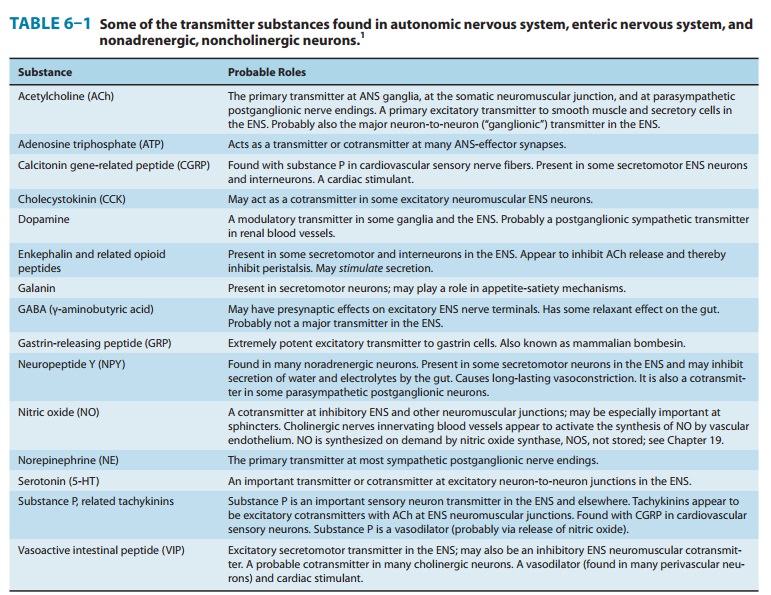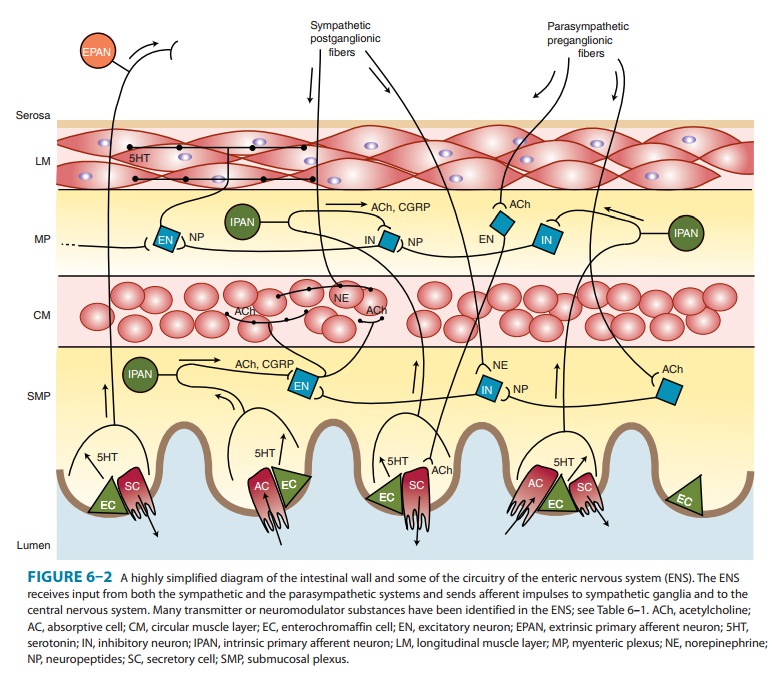Chapter: Basic & Clinical Pharmacology : Introduction to Autonomic Pharmacology
Nonadrenergic, Noncholinergic (NANC) Neurons
NONADRENERGIC, NONCHOLINERGIC
(NANC) NEURONS
It
has been known for many years that autonomic effector tissues (eg, gut,
airways, bladder) contain nerve fibers that do not show the histochemical
characteristics of either cholinergic or adrenergic fibers. Both motor and
sensory NANC fibers are present. Although peptides are the most common
transmitter substances found in these nerve endings, other substances, eg,
nitric oxide synthase and purines, are also present in many nerve terminals
(Table 6–1). Capsaicin, a neurotoxin derived from chili peppers, can cause the
release of transmitter (especially substance P) from such neurons and, if given
in high doses, destruction of the neuron.

The
enteric system in the gut wall (Figure 6–2) is the most exten-sively studied
system containing NANC neurons in addition to cholinergic and adrenergic
fibers. In the small intestine, for example, these neurons contain one or more
of the following: nitric oxide synthase (which produces nitric oxide; NO),
calcitonin gene-related peptide, cholecystokinin, dynorphin, enkephalins,
gastrin-releasing peptide, 5-hydroxytryptamine (serotonin), neuropeptide Y,
soma-tostatin, substance P, and vasoactive intestinal peptide (VIP). Some
neurons contain as many as five different transmitters.

The
sensory fibers in the nonadrenergic, noncholinergic systems are probably better
termed “sensory-efferent” or “sensory-local effector” fibers because, when
activated by a sensory input,they are capable of releasing transmitter peptides
from the sensory ending itself, from local axon branches, and from collaterals
that terminate in the autonomic ganglia. These peptides are potent agonists in
many autonomic effector tissues.
Related Topics